Koyagi
#1462 among destinations in Japan
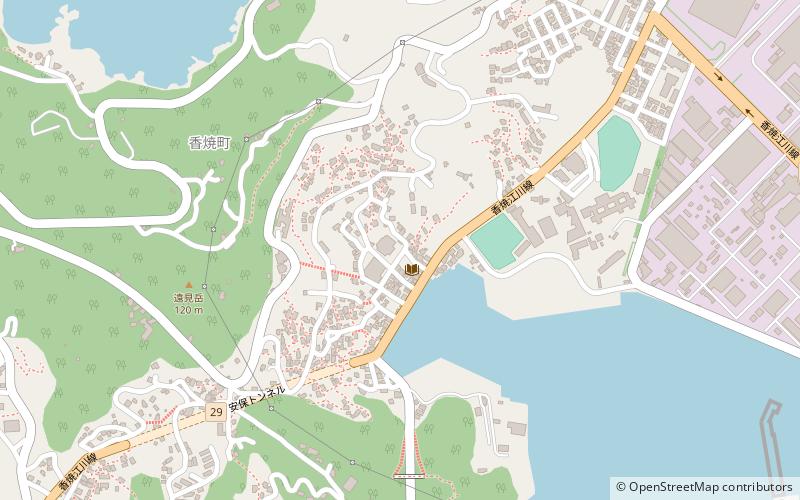
Facts and practical information
Kōyagi was a town located in Nishisonogi District, Nagasaki Prefecture, Japan, situated approximately 13 km south of the centre of Nagasaki City. The town was notable for the Mitsubishi shipyard which occupies 60% of urban areas. ()
NagasakiJapan
Koyagi – popular in the area (distance from the attraction)
Nearby attractions include: Prefectural Art Museum, Glover Garden, Dejima, Oura Catholic Church.
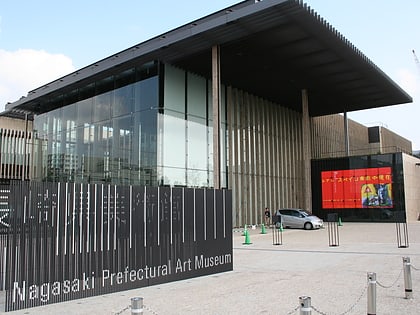 Museum, Art museum
Museum, Art museumPrefectural Art Museum, Nagasaki
130 min walk • The Nagasaki Prefectural Art Museum, a beacon of culture nestled in the historic city of Nagasaki, Japan, is an institution dedicated to the arts and a hub for creative expression. This contemporary museum, designed by renowned architect Kengo Kuma, is situated near...
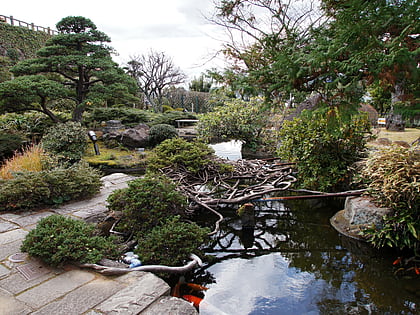 Museum, Garden, Historical place
Museum, Garden, Historical placeGlover Garden, Nagasaki
120 min walk • Nestled on the picturesque hillside overlooking Nagasaki Harbor, Glover Garden stands as a serene testament to the city's rich international heritage. This open-air museum, dedicated to the memory of Scottish merchant Thomas Blake Glover, offers visitors a glimpse into...
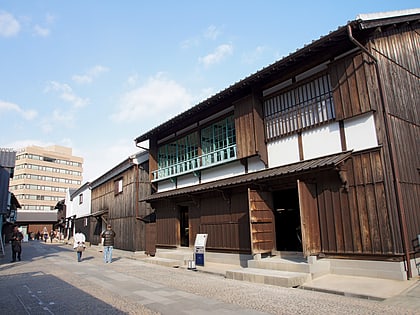 Museum, Specialty museum, History museum
Museum, Specialty museum, History museumDejima, Nagasaki
135 min walk • Nestled in the vibrant city of Nagasaki, Dejima stands as a unique testament to Japan's period of seclusion and its selective engagement with the outside world. This fan-shaped artificial island, now a compelling museum, was originally constructed in 1636 as a single...
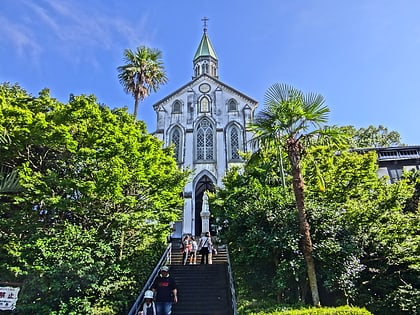
4.7 miNE Landmark 19th-century Catholic churchOura Catholic Church, Nagasaki
121 min walk • Nestled in the historic city of Nagasaki, Japan, Oura Catholic Church stands as a poignant testament to the enduring faith and tumultuous history of Christianity in the country. Constructed in 1864, this Gothic-style structure is not only an architectural marvel but...
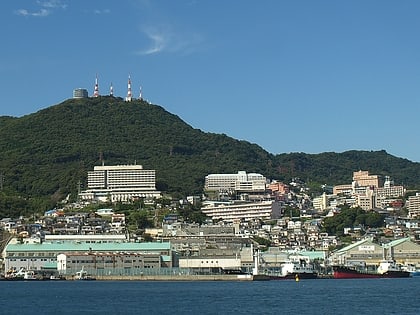 Natural attraction, Mountain, Park
Natural attraction, Mountain, ParkMount Inasa, Nagasaki
128 min walk • Mount Inasa, a prominent hill located in the vibrant city of Nagasaki, Japan, offers one of the most stunning night views in the country. The hill, rising to a modest height of 333 meters, provides a panoramic vista of Nagasaki's cityscape, a sight so breathtaking that...
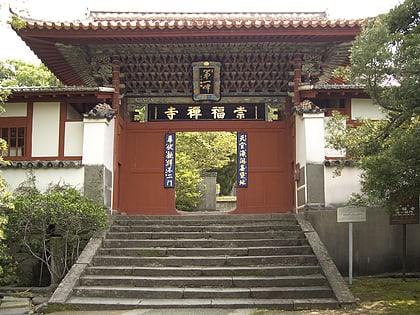 Zen temple with Ming-era architecture
Zen temple with Ming-era architectureSōfuku-ji, Nagasaki
146 min walk • Nestled within the vibrant city of Nagasaki, Japan, Sōfuku-ji is a testament to the rich cultural tapestry that characterizes the region. This historic temple, an exemplar of Ming Dynasty architecture, was founded in 1629 by a Chinese monk as a place of worship for...
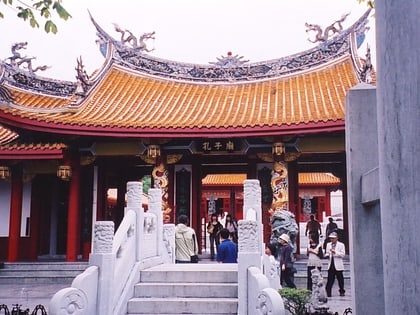 Confucian shrine with Chinese artifacts
Confucian shrine with Chinese artifactsConfucius Shrine, Nagasaki
125 min walk • Kōshi-byō is a Confucian temple in Nagasaki, Japan. Today the land on which it stands is owned by the Chinese Embassy in Tokyo.
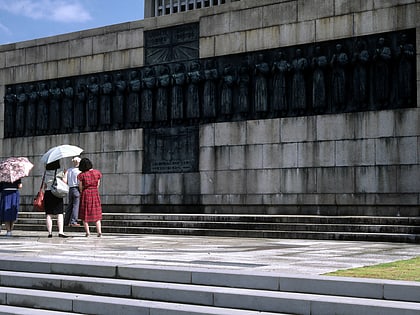 Memorial to Christians executed in 1597
Memorial to Christians executed in 1597Twenty-Six Martyrs Museum and Monument, Nagasaki
150 min walk • The Twenty-Six Martyrs Museum and Monument were built on Nishizaka Hill in Nagasaki, Japan in June 1962 to commemorate the 100th anniversary of the canonization by the Roman Catholic Church of the Christians executed on the site on February 5, 1597.
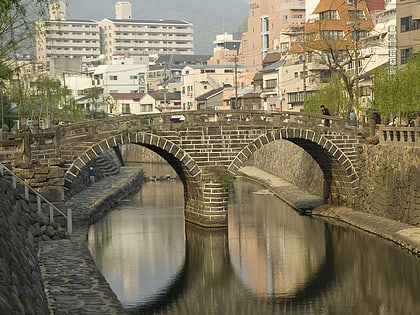 Stone arch bridge dating to 1634
Stone arch bridge dating to 1634Megane Bridge, Nagasaki
148 min walk • Meganebashi or Spectacles Bridge, over the Nakashima River was built in Nagasaki in 1634 by the Chinese monk Mokusunyoujo who was in the second generation of Chinese monks living at Kofukuji Temple.
 Temple, Buddhist architecture
Temple, Buddhist architectureFukusai-ji, Nagasaki
151 min walk • Fukusai-ji is an Ōbaku Zen temple in Nagasaki, Nagasaki, Japan. Its honorary sangō prefix is Bunshizan. Founded in 1628 and later destroyed in 1945, Fukusai-ji has since been reconstructed in the shape of a turtle with an 18-metre high aluminium alloy statue of Kannon, the Bodhisattva of compassion.
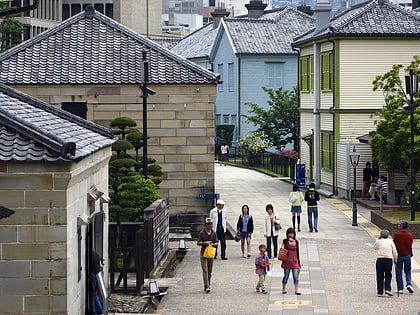 Island, Museum
Island, MuseumDejima, Nagasaki
136 min walk • Dejima was a Portuguese and subsequently Dutch trading post at Nagasaki, Japan, from 1634 to 1854. Dejima was also the location for trade with the Chinese at the time, and thus the only place designated for foreign trade and exchange during the historical Japanese Edo period.